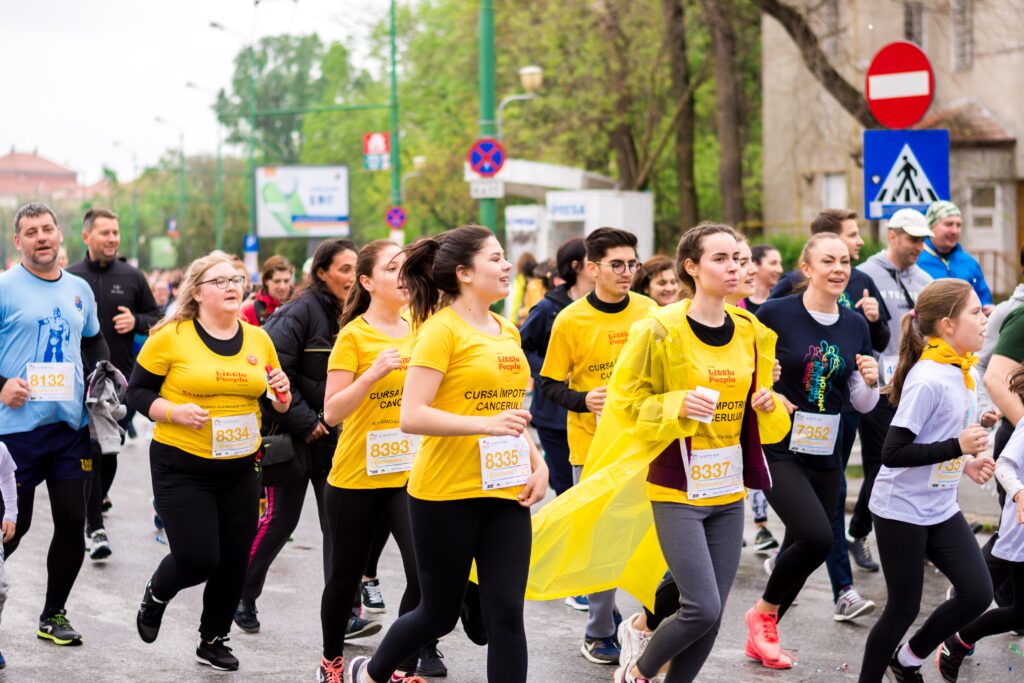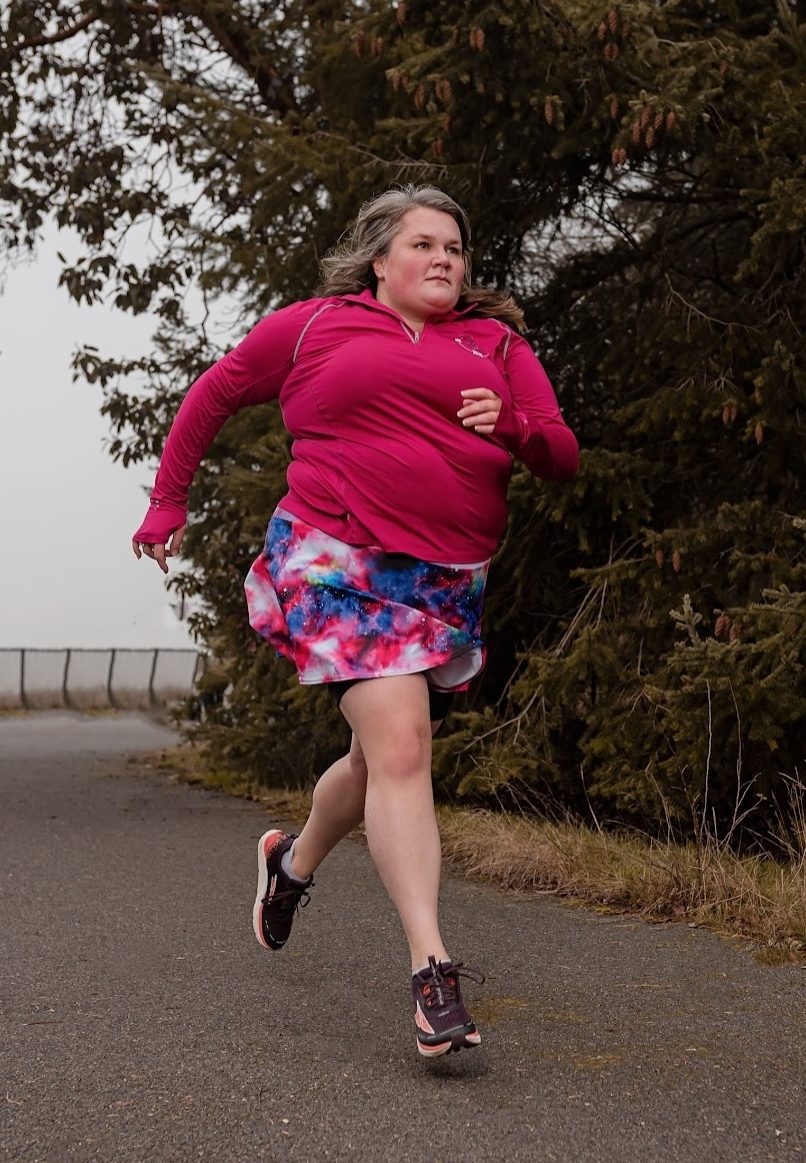Empowering Larger Runners: Overcoming Barriers

Running is largely mental. Ask any competitive runner and they’ll confirm this. Being able to tune out the negativity, keep your mental narrative positive and focused, and to accept small victories along with the setbacks, all contribute to improvements in condition and race results.
Starting to run is also largely mental. Anyone who has gone out the front door for their first run ever, or their first run in a long time, knows how difficult it is to lace up and head out.
Overcoming Mental Hurdles for Larger Runners
Now imagine that on top of everything, this runner, who is trying to set out on their first run, has been told their entire life that they don’t belong in the fitness community. This runner struggles to find comfortable clothing in general (much less for fitness); this runner has been made to feel that moving their body will only bring ridicule; this runner has been made to feel like they must have a different body to even be able to participate in movement.
Running is largely mental, and someone in a larger body, who decides to try running, is already facing one mental hurdle of getting out the door. The second, and more difficult, hurdle is learning to cast away the expectations that society places upon bodies in movement.
The stories from runners in larger bodies (many of whom prefer the phrase “fat runner” as a way to normalize the term fat as a neutral descriptor) vary from those who tried running once, but quit because they couldn’t run a mile, to those who experienced harassment and physical assault from bystanders, simply because they dared to move in public in their bodies. Empowering larger runners is a way that we can grow the running community.
Starting with Realistic Expectations
So how does a fat runner begin to cast away the fears and doubts to even step out that front door? It goes much deeper than finding the right shoes or, if you’re lucky, the right compression clothing in your size. The first thing these runners need to do is lower their expectations.
Yes, this may seem counterintuitive. How many times has somebody started running, but quit because they couldn’t run a full mile? Maybe they started running, but got injured quickly. These scenarios can happen because they were not aware of proper form and pacing.
If you are one of these people in a larger body who wants to become a runner, but all you see are long-legged gazelles running 7-minute miles in running media, you need to lower your expectations. The number of people who can start running at that pace are few and far between, especially new recreational runners. The number of people who can go out and run a mile without stopping, especially if they haven’t run since high school, is also small.
Defining Running Success on Your Terms
The best thing you can do, as a new runner, and especially a runner who is trying to combat a lifetime of messaging that you don’t belong or you’re doing it “wrong,” is to start small. Switch your mindset to one of continuous, small improvements – not expecting the moon right away. Start off with a run/walk approach. The run doesn’t have to be longer than 20 seconds. Your walk should be as long as it takes you to catch your breath. Start slow; no sprinting! A run is a hop from one foot to the next, not a pace.
On that note, look up the requirements for Olympic race walkers and you’ll see that they have to keep one foot on the ground at all times. A hop is what qualifies as a run, and what DISqualifies a racewalker. You can hop at a pace that may be slower than your walk, and it’s still a run, because mechanics are what make a run, not speed.
Building an Inclusive Running Community
And the best thing you can do is find a community. Communities like RunTriBike, or The Movement Mindset, create spaces for empowering larger runners to start. They celebrate people in all bodies by celebrating their achievements, no matter how big or small. There are communities that have specific rules against discussing weight loss or food rules, to honor those runners who may face eating disorders or messaging about their bodies that they deserve to escape.
Overall, runners in larger bodies have a lot more options than when I started running 15 years ago. There are fat runners in the media, on social media and at races. Today, we can see coaches in larger bodies who are aware and sensitive to the needs of these runners.
Empowering Larger Runners Through Mindset and Community
Start slow; switch to a growth mindset; find a community. Start with these three tenets and you’ll be well on your way to becoming a runner for life. No matter your body size.
ADVERTISEMENT

Marci Braithwaite is an RRCA- and USATF-certified running coach who focuses on beginner runners and athletes in larger bodies using Size-Inclusive and HAES-aligned principles. She has completed over 100 races of various distances in her 12 years of running, including a marathon, and she has her sights set on completing a 50k in 2023









